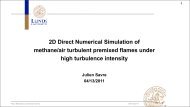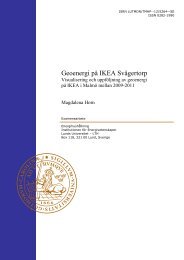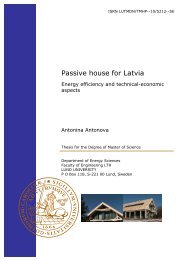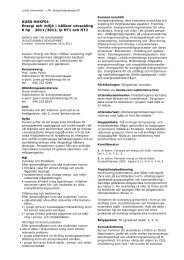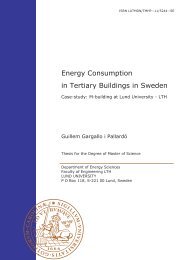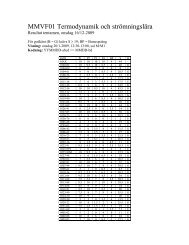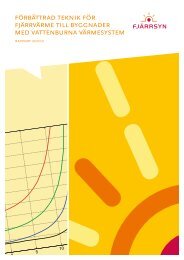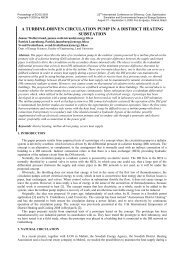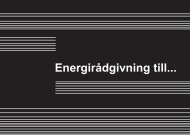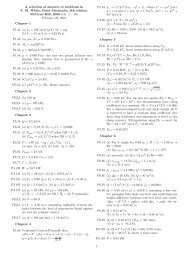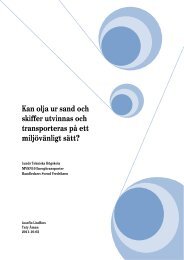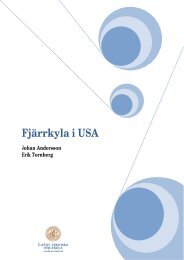MODERN THERMAL POWER PLANTS
MODERN THERMAL POWER PLANTS
MODERN THERMAL POWER PLANTS
You also want an ePaper? Increase the reach of your titles
YUMPU automatically turns print PDFs into web optimized ePapers that Google loves.
Abstract<br />
The European Union (EU) has laid down very clear objectives for the reduction of<br />
greenhouse gases in the hope that it will prevent or mitigate climate change. Political<br />
incentives are used to make the power industry adopt changes in order to reach<br />
these EU targets. In this thesis, some solutions that could help power companies<br />
meet the EU objectives are evaluated. Thermodynamic models have been developed<br />
to evaluate the proposed methods. A description of the models and the way in<br />
which they are used to model power plant cycles in off-design mode is included in<br />
this thesis.<br />
The focus was on combined-cycle power plants, which have the highest<br />
efficiency among commercial power plants today. Three ways of adapting power<br />
plants so as to meet the EU targets were formulated:<br />
• reduced CO 2 emissions<br />
• increased use of biofuels<br />
• improved part-load abilities<br />
A new method based on using low-grade heat when implementing carbon capture<br />
in a combined cycle power plant is presented. The results show that the method can<br />
increase the total efficiency and reduce the initial cost of the power plant. The<br />
method is applicable for both retrofitting to existing plants and for new plants. The<br />
effect of using low-calorific bio-fuels in a combined-cycle power plant was<br />
investigated. The results show that below a heating value of about 20-25 MJ/kg the<br />
plant quickly departs from its design point. The supply of power to the national grid<br />
is expected to be fluctuate more in the future due to the uneven availability of wind<br />
and solar power. Therefore, two part-load operation strategies were evaluated. The<br />
first involves a strategy that entails less wear on the gas turbine, which could extend<br />
the maintenance interval of the unit. The second method combines two wellestablished<br />
part-load strategies for part-load operation of steam-cycle power plants.<br />
The combination of the two methods will increase the part-load efficiency of the<br />
power plant.<br />
i



